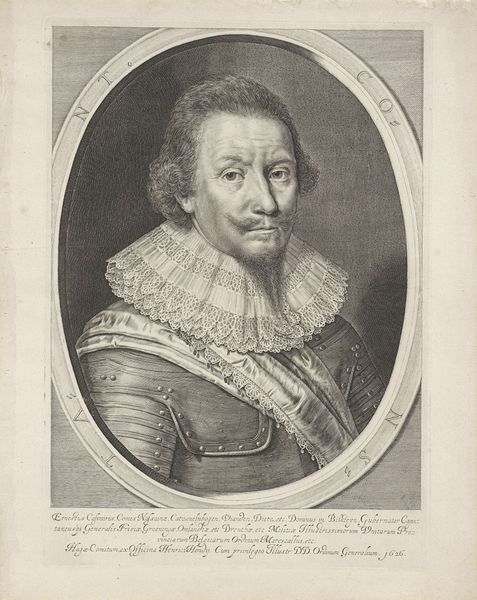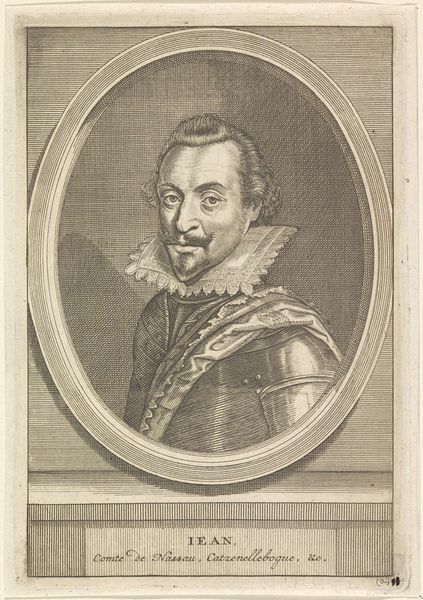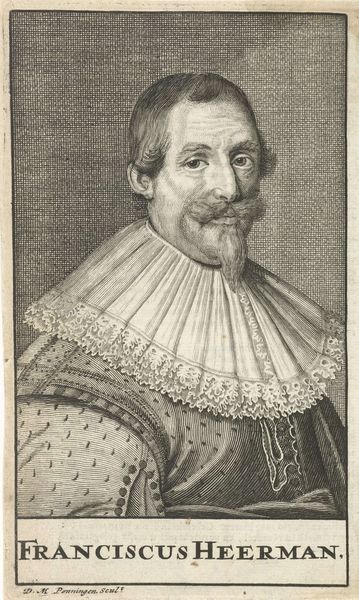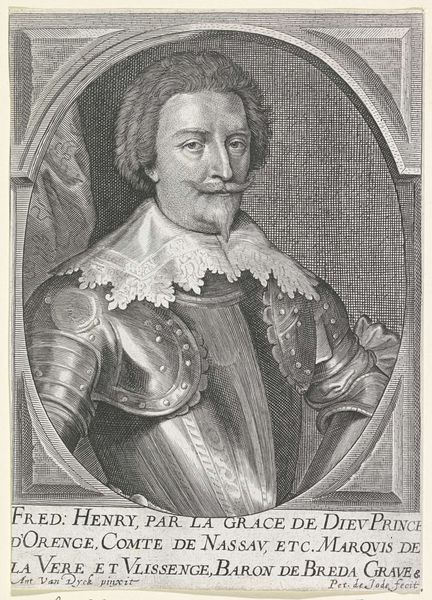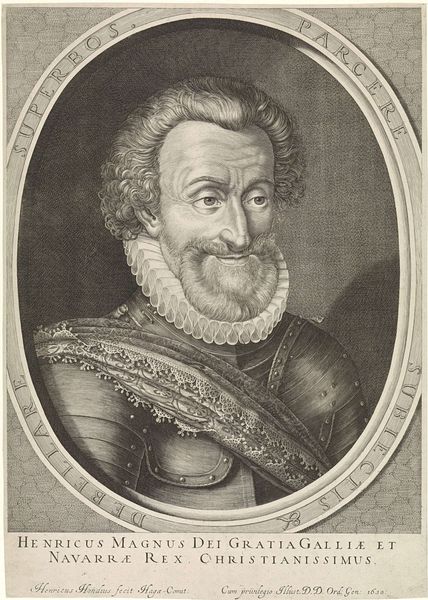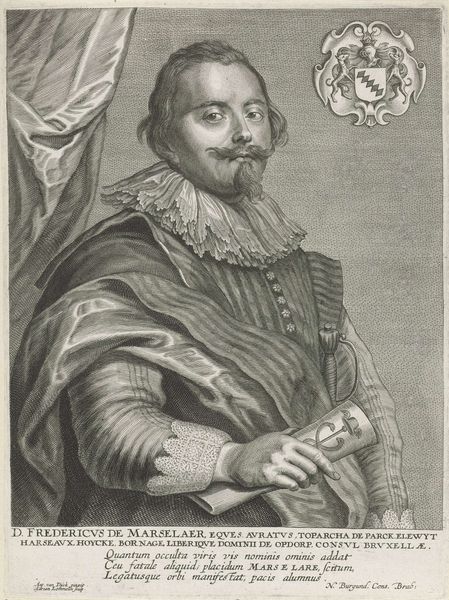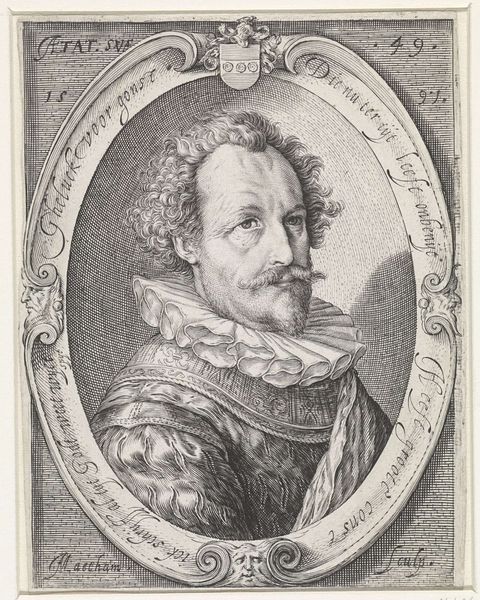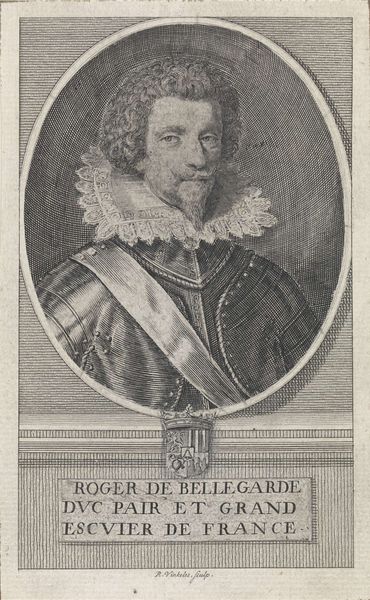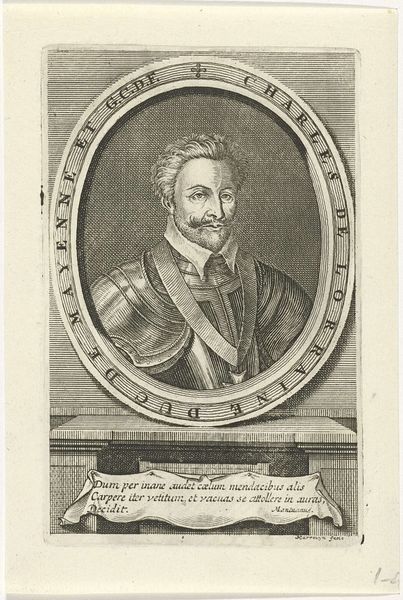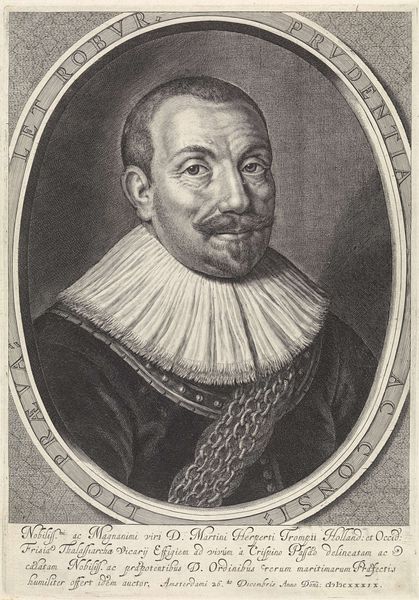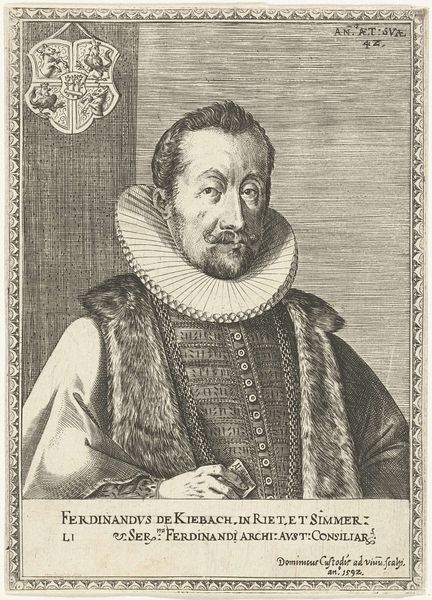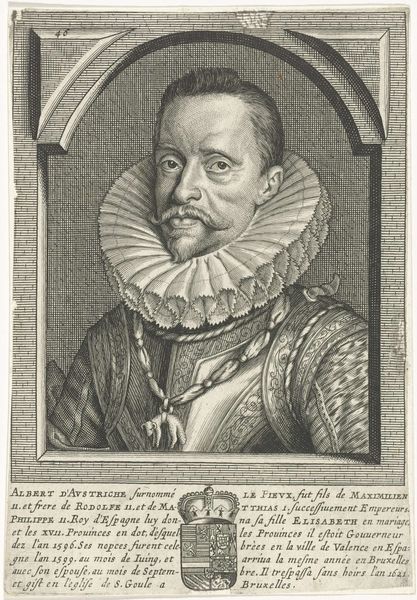
Portret van Christiaan IV, koning van Denemarken en Noorwegen 1629
0:00
0:00
simonvandepasse
Rijksmuseum
engraving
#
portrait
#
baroque
#
history-painting
#
engraving
Dimensions: height 411 mm, width 292 mm
Copyright: Rijks Museum: Open Domain
Curator: This engraving is a portrait of Christian IV, King of Denmark and Norway. Simon van de Passe created it in 1629. What strikes you immediately about it? Editor: It’s a very stern image, almost…imposing. There is a visual tension created by that frilly ruff against the gravity in his gaze. He appears burdened by the weight of his crown. Curator: Well, look closer; Van de Passe captures something about the cultural expectations of kingship in the Baroque period. Consider the inscription framing the portrait: 'AEtATIS REGNANTIS'. It implies the king and the state are one body—as if they are inseparable concepts in their time and function. Editor: Indeed. And a symbol of its oppressive patriarchal structure of that time, where the state justified absolute power. Consider the broader European context. It's around the time of the Thirty Years' War. Kings posturing like this became increasingly out of step with emerging democratic values, with popular sentiment turning toward a more representational politics. Curator: I see your point, but also observe the minute detail in his lace collar, his decorated doublet, the lettering that surrounds the portrait. Van de Passe, whose father also engraved portraits, was using printmaking to present symbols of power and to reproduce idealized images to bolster the King's image in the face of so much unrest. The Baroque style favors that tension between opulence and austerity, power and frailty. Editor: I agree it is striking how an engraved image circulated and became a key part of that king’s identity. To consider these as images propagating a certain type of dominance, or performative identity, adds depth. Curator: This close look reveals so much about Christian IV and that period’s worldview. The engraving encapsulates a king who sought stability amidst turmoil. Editor: For me, it brings up questions about how royal portraits functioned both to convey authority and to obscure or erase any kind of dissident voice, which makes understanding its context critical.
Comments
No comments
Be the first to comment and join the conversation on the ultimate creative platform.

